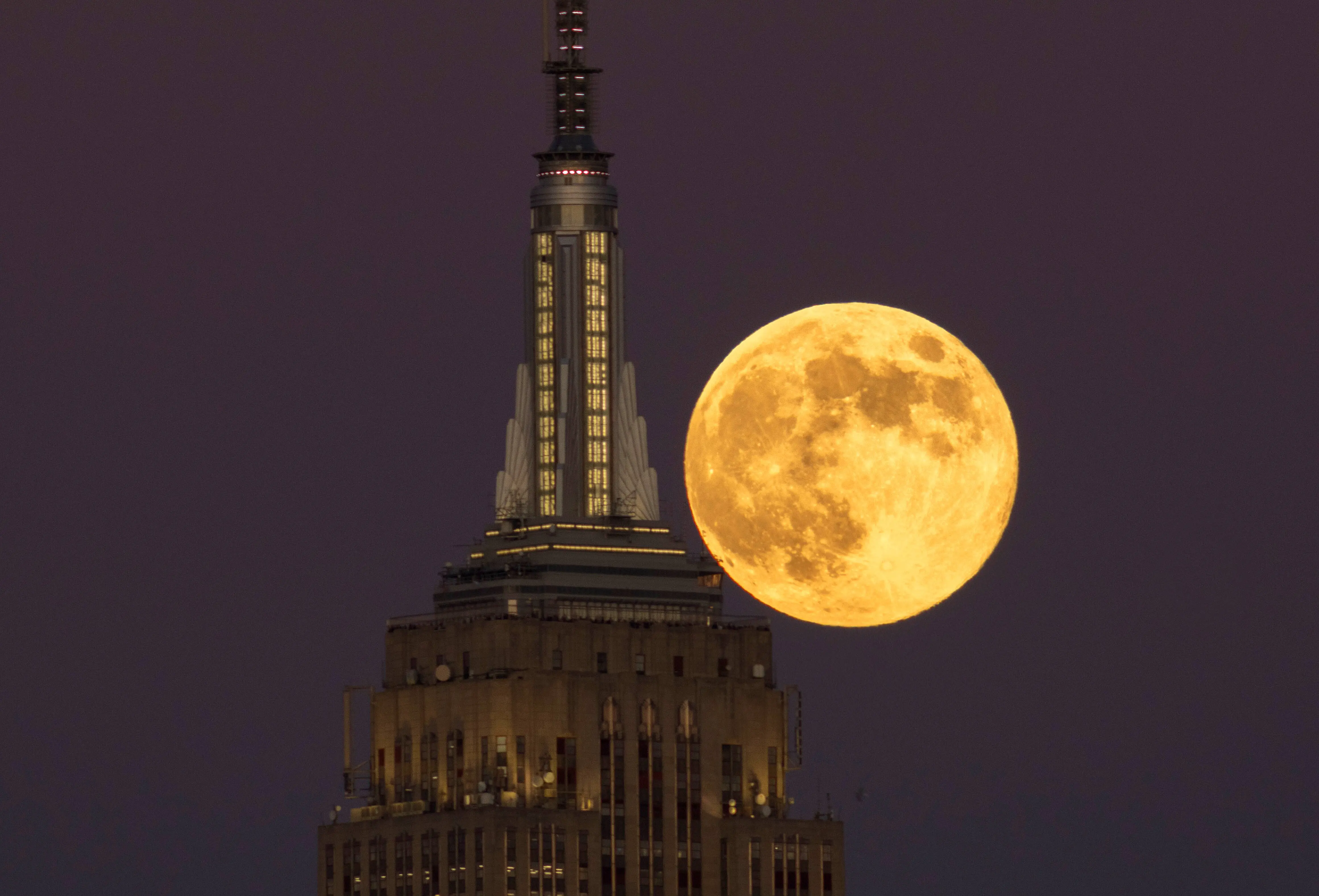Don’t miss the Cold Moon on December 4 — the last Supermoon of 2025 follows the Beaver Moon’s glow
-
 JERSEY CITY, NJ - NOVEMBER 15: The full Beaver Supermoon rises behind the Empire State Building in New York City as the sun sets on November 15, 2024, as seen from Jersey City, New Jersey. (Photo by Gary Hershorn/Getty Images)
JERSEY CITY, NJ - NOVEMBER 15: The full Beaver Supermoon rises behind the Empire State Building in New York City as the sun sets on November 15, 2024, as seen from Jersey City, New Jersey. (Photo by Gary Hershorn/Getty Images)Skywatchers have one more reason to look up this year. The Cold Moon, appearing on December 4, 2025, will be this year's last Supermoon. After the exquisite Beaver Moon in November, this would be the final full moon of 2025 and mark the close of this year's super bright full moon events.
Astronomers say the Cold Moon will appear bigger and brighter than usual, thus promising a spectacle for people across the world, especially those who like night sky viewing.
What is a Cold Moon
The December full moon is called the Cold Moon, named after the long, cold nights that begin during this month in the Northern Hemisphere. The origin of the term comes from Native American and European traditions that gave each month's full moon a special name based on seasonal changes.
For centuries, December's moon has been known as the "Cold Moon" because it rises high and bright during the first real chills of winter. It is also sometimes called the Long Night Moon since December nights are among the longest of the year.
Why is it special this year
This year's Cold Moon will also be a Supermoon, which means it will appear larger and brighter than a normal full moon. A Supermoon occurs when the Moon reaches its closest point to Earth in its orbit, otherwise known as perigee.
During this time, the Moon can appear as much as 14% larger and 30% brighter than when it's farther away. To the naked eye, the difference may seem subtle, but the glow of a Supermoon often makes the night sky appear more vivid.
It will be the fourth and final Supermoon of 2025, a year already having seen a Beaver Moon in November, a Harvest Moon in October, and a Sturgeon Moon earlier in the year.
When and where to watch
The Cold Moon will be full on Thursday, December 4, 2025, at approximately 11:10 p.m. IST, depending on your time zone.
To get the best view, step outside just after sunset and look toward the eastern sky. When it's near the horizon, it will appear especially large due to an optical illusion known as the "Moon effect."
Astronomers said the clearest view would be seen from an open space away from city lights: a rooftop, a park, or a quiet field. Many times, these Supermoon glows can be easily captured by smartphones or cameras, sans special equipment.
Following the Beaver Moon
The Cold Moon follows last month’s Beaver Moon, which marked the November full moon and was also a Supermoon. The Beaver Moon got its name from the time of year when beavers build their winter dams, and it was traditionally seen as a sign of preparation for the cold months ahead.
Together, the Beaver Moon and Cold Moon mark the transition between late autumn and early winter — a period when the nights become longer and the skies clearer for celestial viewing.
What’s next for skywatchers
After the Cold Moon, the next major lunar event will be the Wolf Moon in January 2026. While not a Supermoon, it will still mark the start of the new lunar year and continue the tradition of monthly full moon names.
Astronomers say the Cold Moon is a reminder of how our planet’s motion and the Moon’s orbit work together to create such natural beauty.
So, mark your calendars for December 4, step outside, and take a few moments to enjoy the year’s final Supermoon — the Cold Moon, glowing brightly against the winter sky.